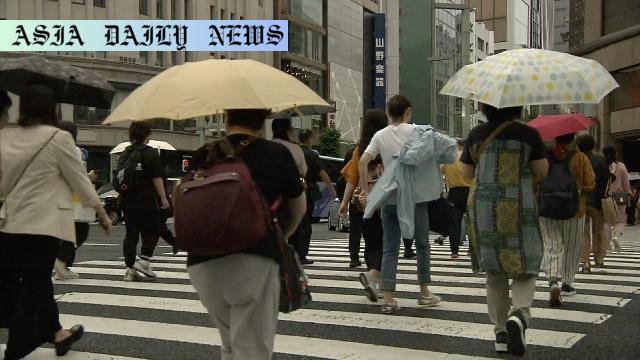Heavy Rain: Expect unstable weather in eastern Japan with localized downpours and risks of mudslides, flooding, and swollen rivers.
Unstable weather is bringing localized heavy rain to eastern Japan.
Northern Kyushu may face downpours and increased flood risks.
Residents are warned about landslides, flooding, and swollen rivers.

Overview of Unstable Weather in Eastern Japan
Eastern Japan, including regions such as Tokai and Kanto-Koshin, is currently experiencing unstable atmospheric conditions that are expected to persist through Sunday night. The Japan Meteorological Agency (JMA) has reported the development of heavy rain clouds that have already led to significant downpours, causing concerns for local communities. These rains have been caused by a low-pressure system hovering above the Sea of Japan, which is further fueling the development of rain clouds. On Sunday morning, rain clouds were observed forming over Hokuriku and Kyushu in addition to the Tokai region.
The Kagiana district of Shizuoka City, for instance, recorded a rainfall volume of 54 millimeters within an hour early Sunday morning. This magnitude of rainfall is capable of creating vulnerabilities such as mudslides and localized flooding. The JMA warns that these conditions pose serious risks to low-lying areas and rivers that might swell due to high water volumes. Residents in affected regions are strongly advised to stay updated and take necessary precautions.
Prolonged Downpour Risks for Northern Kyushu
Northern Kyushu, in particular, is forecast to bear the brunt of unstable weather conditions through Monday, with intermittent downpours potentially exceeding 30 millimeters per hour. These consistent rainfalls could significantly strain drainage systems and elevate the risk of extensive flooding. Coupled with strong lightning and thunder activities, experts anticipate the situation to worsen in areas experiencing weaker structural and natural defenses against such climatic events.
Beyond the immediate impact of flooding, frequent rainfall of this sort increases the likelihood of mudslides and subsequent infrastructural damages. Local authorities along with the Japan Meteorological Agency have emphasized the importance of early response mechanisms, urging residents and local governments to take immediate safety measures. Residents living near rivers or slopes are advised to be prepared for potential evacuations.
Safety Precautions for Communities in Vulnerable Areas
The recurrent heavy rain spells have intensified concerns among meteorologists and disaster management agencies. The unpredictable weather patterns not only impact infrastructure but also jeopardize lives, particularly in areas that have already experienced soil saturation or previous incidents of flooding. To mitigate risks, residents in the affected regions are advised to regularly monitor weather updates, secure their belongings, and prepare emergency supplies in advance.
Additionally, increased caution should be taken when navigating through low-lying areas prone to water accumulation. Parents and guardians should ensure that children remain indoors during periods of heavy rainfall, while businesses reliant on transportation or delivery services should plan accordingly. The authorities have an ongoing role in disseminating real-time updates and offering shelter for those displaced by floods.



Commentary
Reflecting on Japan’s Climate Challenges
The recent weather developments in Japan serve as a compelling reminder of the vicissitudes of our planet’s climate. Localized heavy rainfall highlighted in regions such as eastern Japan and northern Kyushu underscores the importance of preparedness and rapid response mechanisms. While Japan boasts one of the world’s most robust disaster mitigation frameworks, the increasing unpredictability of weather patterns now poses a greater challenge to public safety.
The Role of Community and Technology in Safety Preparedness
It is heartening to see collaborative efforts between meteorological agencies, local governments, and the public in moments such as these. Initiatives to notify citizens about potential risks and provide expertise on structural safety continue to emphasize Japan’s cohesive disaster response initiatives. Advanced technologies—like rainfall prediction models, prompt weather updates, and emergency hotline systems—must continue developing to meet the needs of increasingly volatile weather conditions.
A Thought on the Way Forward
While weather agencies can offer timely guidance and resources, public participation ultimately shifts the tide. Communities need to focus not only on immediate safety procedures but also on building long-term resilience against floods, landslides, and other associated hazards. For example, school curriculums and community workshops could include climate education tailored to changing weather patterns.
In conclusion, the heavy rains affecting eastern Japan remind us of the delicate balance entwined within natural ecosystems—and the human responsibility to stay informed, act proactively, and support one another in the face of such challenges.